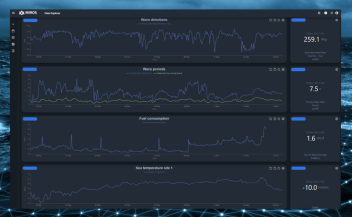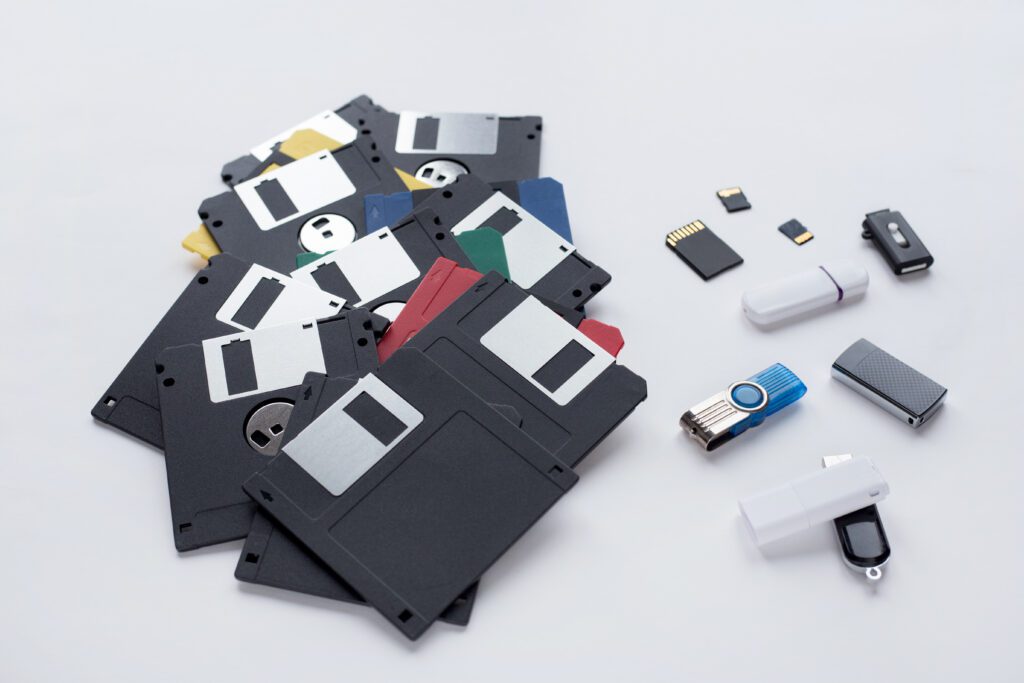Hardware without seamless cloud integration – does it make sense?
Hardware without seamless cloud integration for automatic and hassle-free file sharing and backup is less than half as valuable as the same hardware with the modern IT infrastructure.




The “big hits” of file sharing options through recent decades
Before I dive straight to the conclusion, let us take a walk through some of the “big hits” of file sharing options through recent decades.
Do you see the “save” icon on Microsoft Office and many other software? Some of us are old enough to remember seeing it in physical form as a 3.5″ floppy disk. Backtrack 20 years, these floppy disks were the front and center of file sharing for most computer users, hence why the “save” icon has been a 3.5″ floppy disk for decades.
After that CDs became the popular vessel for transferring and sharing data for some years, before they were replaced by USB sticks, which were smaller, had bigger memories and more affordable. In fact, most of us would have at some point used a USB device to share photos, documents and files and many of us will remember a time when sharing files this way was the go-to choice.
However, with the advancement of the internet, we all moved on to better data sharing options without having to physically hand over a disk to one another. Companies started having their own server rooms with racks of servers acting as a centralized computer base. Authorized users can access data on the server through the net, boosting the popularity of file transfer portal (FTP) options like WeTransfer and DropBox.

What do we use nowadays?
Well, certainly not 3.5 floppy disks or CDs; nor can we easily purchase a computer that still takes these by default. And when was the last time you used FTP, WeTransfer or DropBox as a first-choice option? For sharing files or photos, it is fast, easy and convenient to share it with the likes of Google Cloud and iCloud these have replaced our past favorites. In a similar sense, OneDrive, iCloud, and Google Cloud are effortless and robust, continuously backing up and sharing files across multiple devices and users.
To see for yourself, just perform a Google Image search for “file sharing old”. You’ll find screenshots illustrating the setup and operation of peer-to-peer (P2P) and server-based file sharing systems. However, if you search simply for “file sharing” you’ll notice most of the results relate to cloud computing for file sharing.
End-user satisfaction is based on data-sharing options
Now, since we do ocean insights measurements at Miros, how does this all tie into choosing between hardware and as-a-service sea-state monitoring options?
Aside from choosing the hardware that ticks the procurement requirement boxes, a major thing to consider, but is often overlooked, is how good the data sharing options are.
If you still think the end-user satisfaction score is based solely on hardware, perhaps consider why the best smartphones that take the top photos not only have great physical cameras but also the best AI image refinement algorithms. Similarly, if you were able to buy a smartphone with all the flagship-level hardware specs, but without the Google Cloud or iCloud features, how much less valuable would it be to you as the user?
Bear in mind that system operators, be it your colleagues or customers, are used to the convenience of modern data-sharing options on smartphones and computers. How frustrating might it be to have to operate “yesterday’s systems” during work hours, while enjoying the latest advances in technology when using personal devices?
Tackle the challenges and requirements of tomorrow
For me, hardware without seamless cloud integration for automatic and hassle-free file sharing and backup is less than half as valuable as the same hardware with the modern IT infrastructure. Once I know the convenience of continuous, uncomplicated, real-time data sharing with cloud computing, taking time to physically copy and transfer data becomes time and efficiency lost. Don’t you agree?
I trust that this information provides you with a better understanding of the benefits and importance of selecting the most advanced data-sharing solution. It should play a significant role when deciding on sea state monitoring solutions to ensure your business stays future-proof and able to tackle the challenges and requirements of tomorrow.
You want to explore this topic further? Read more bout Miros Cloud and schedule a demo.

